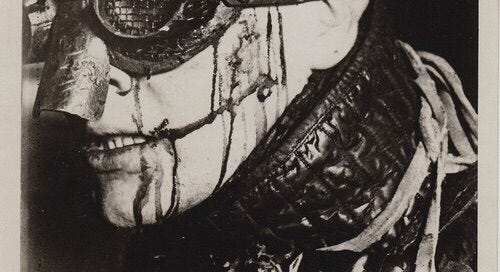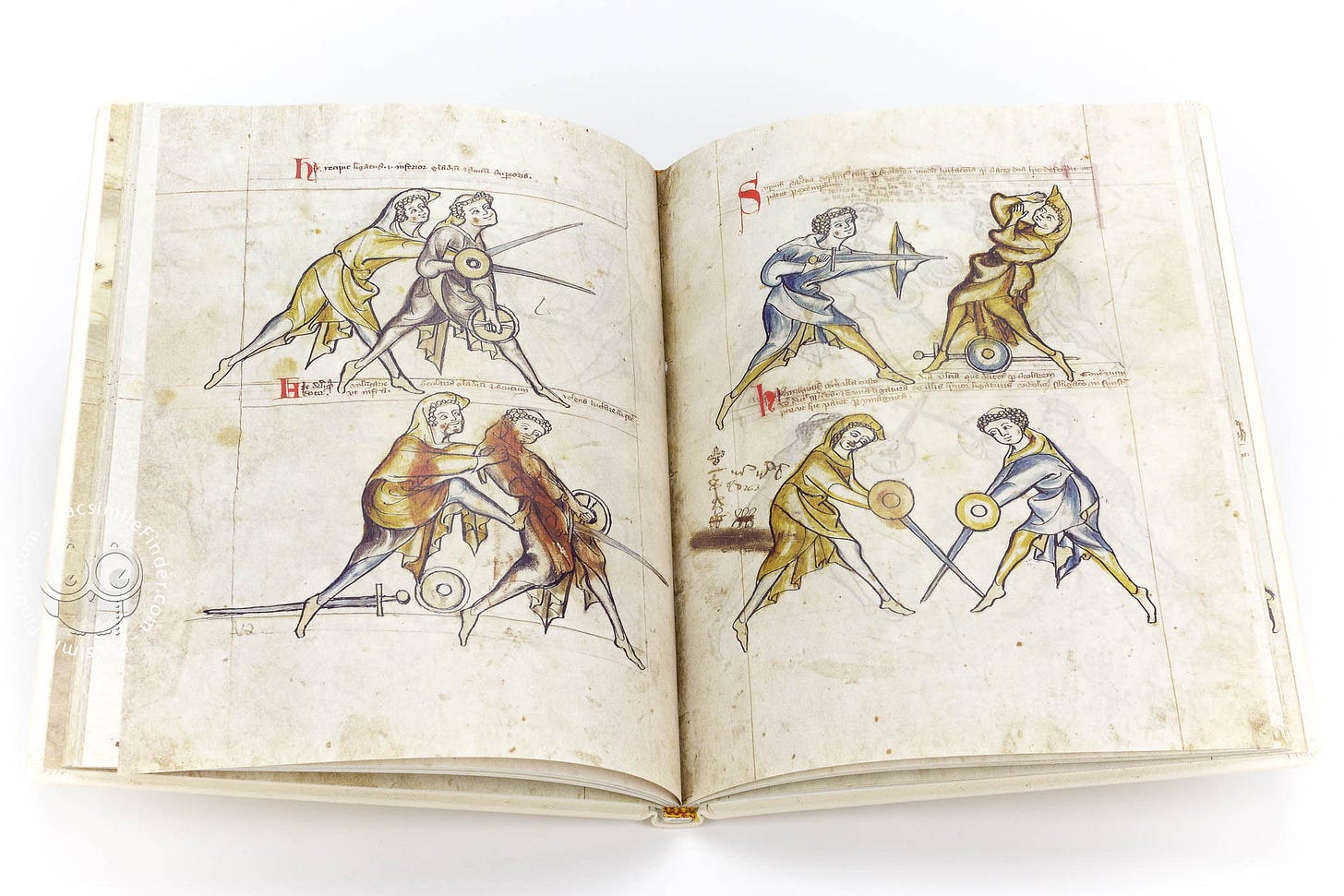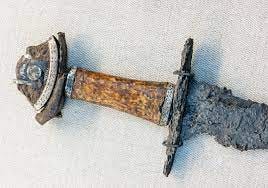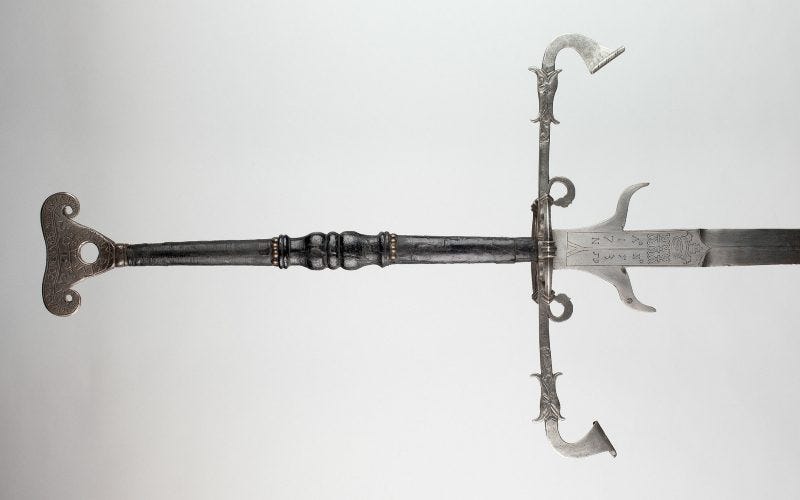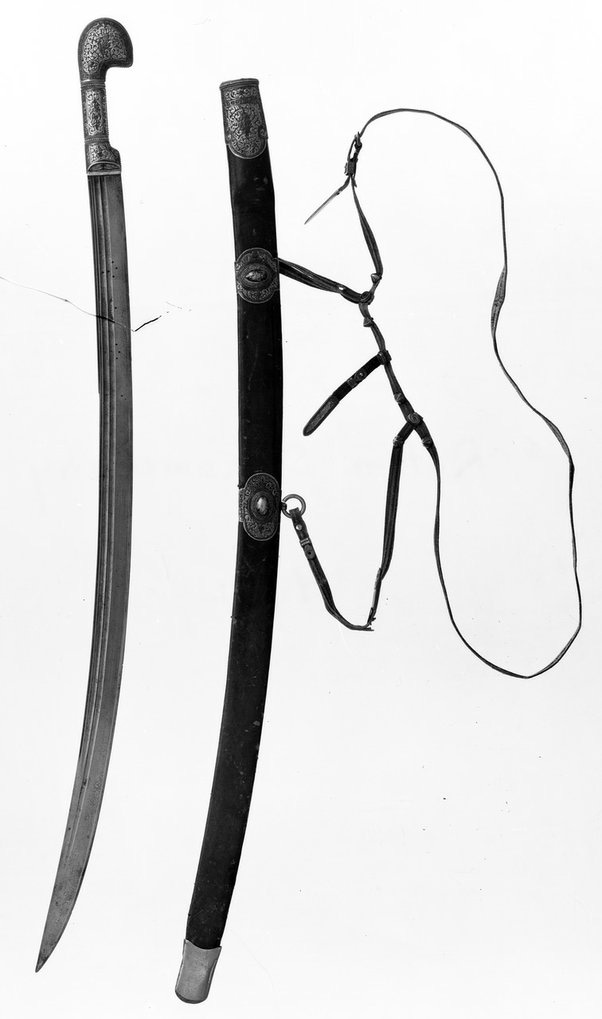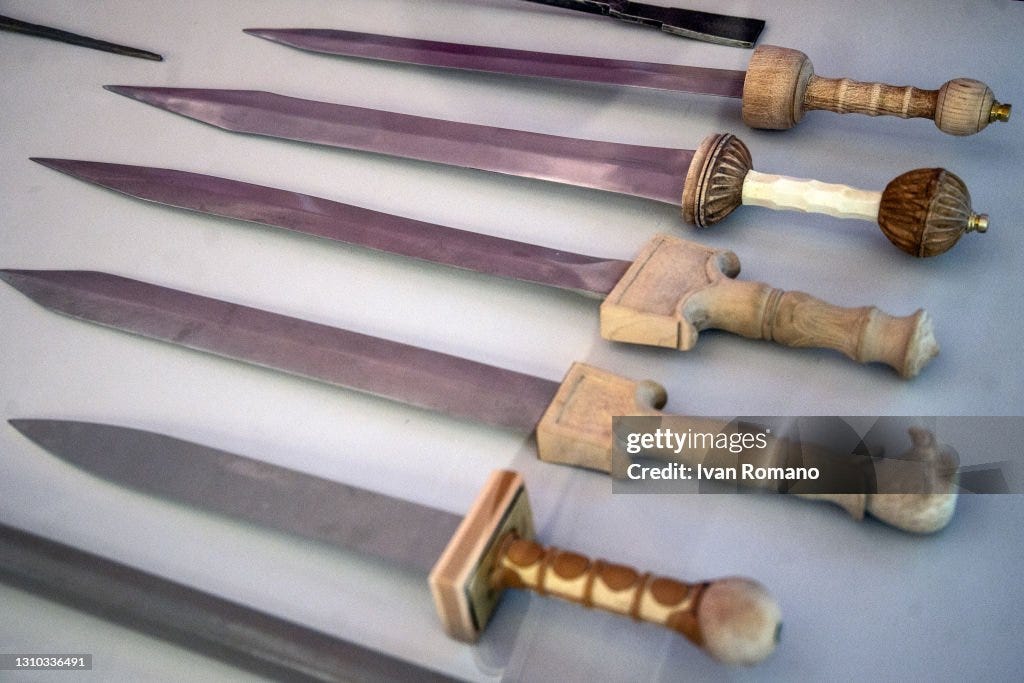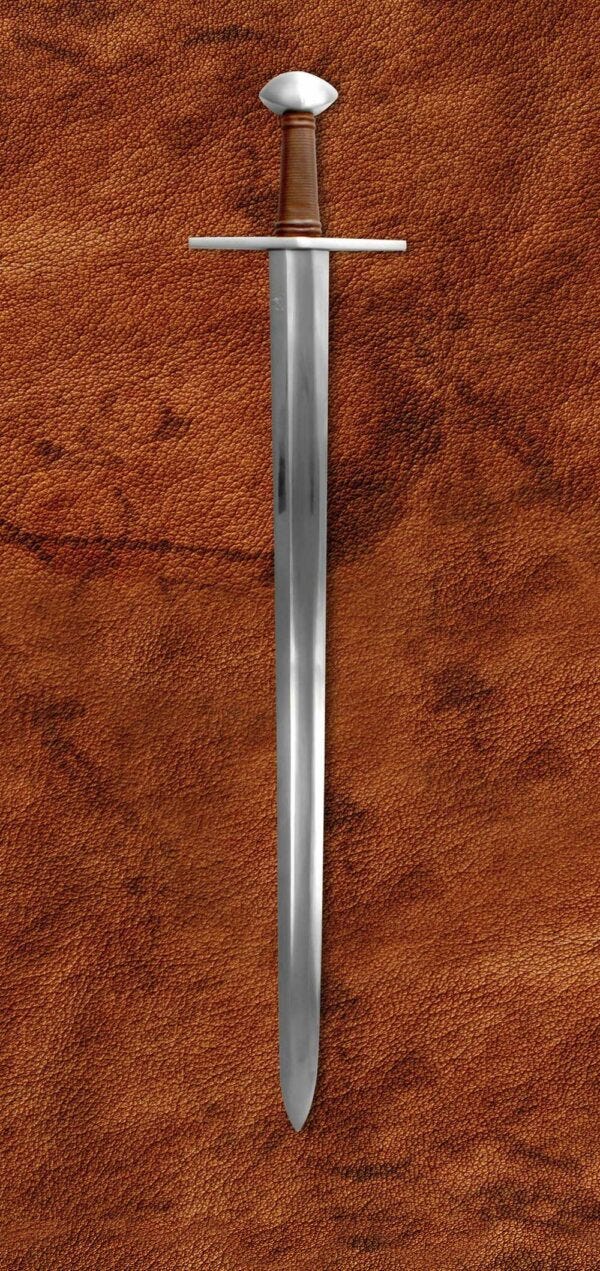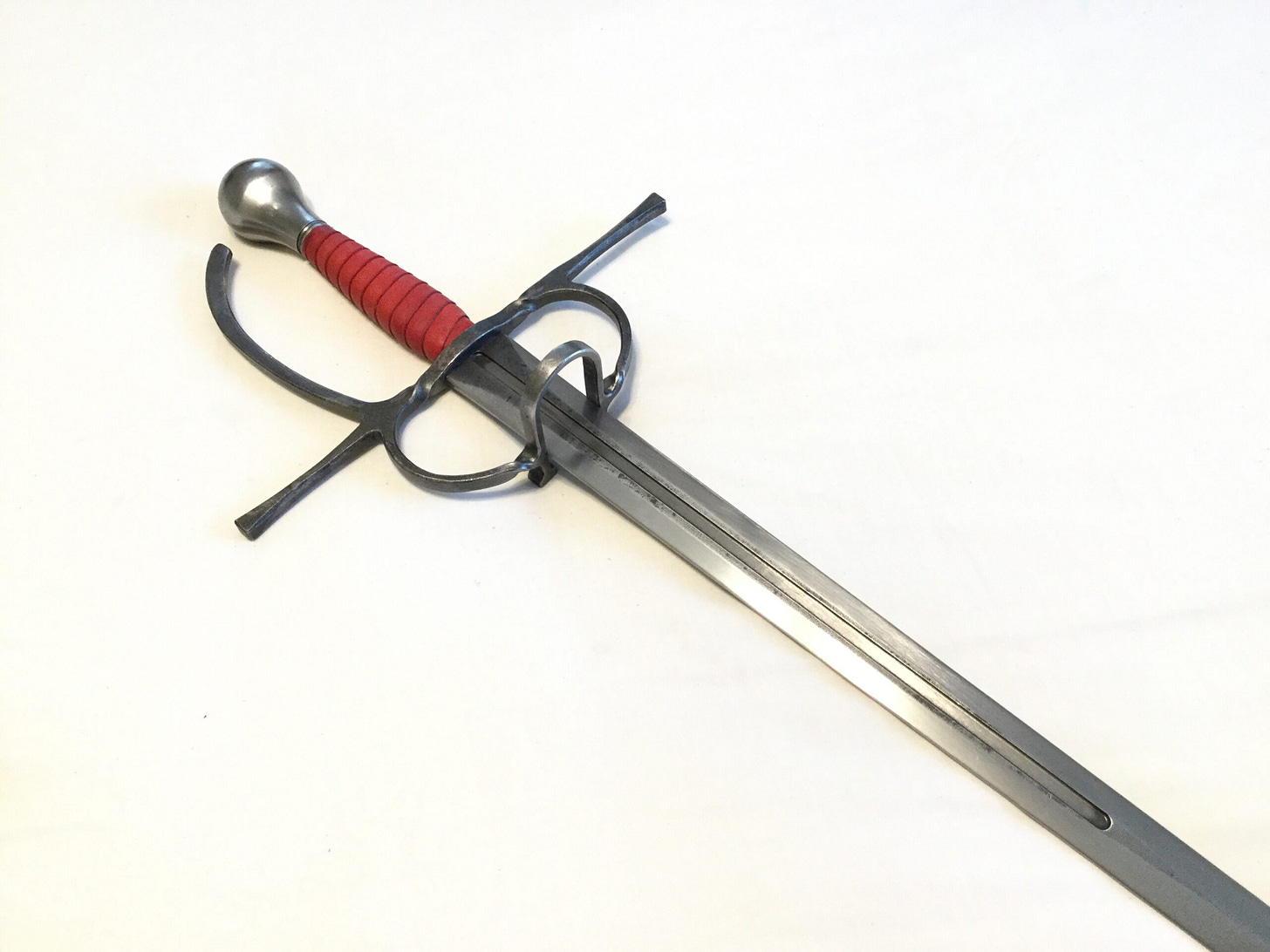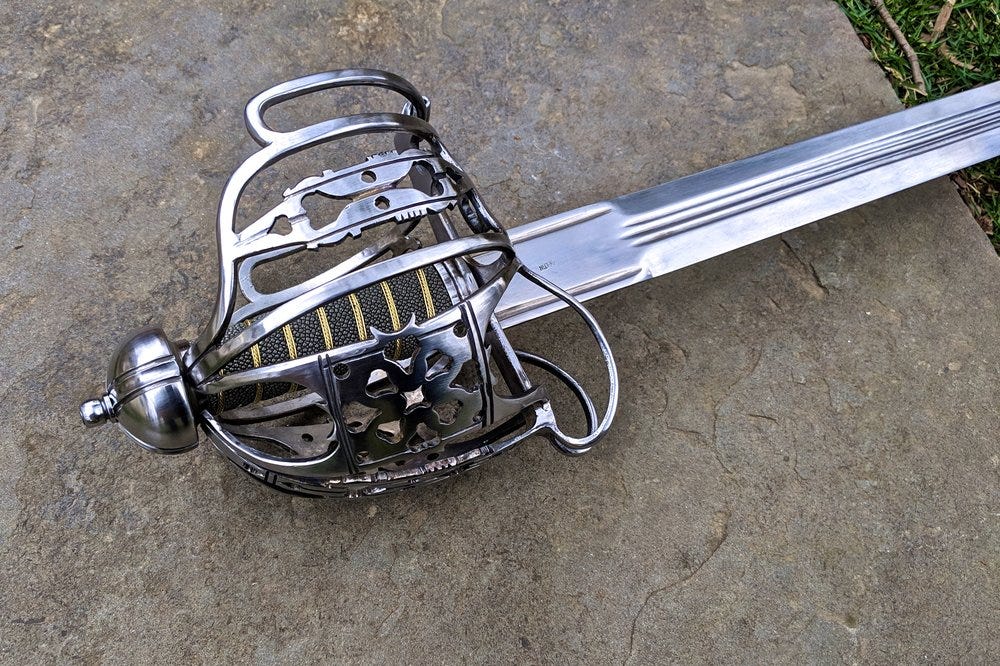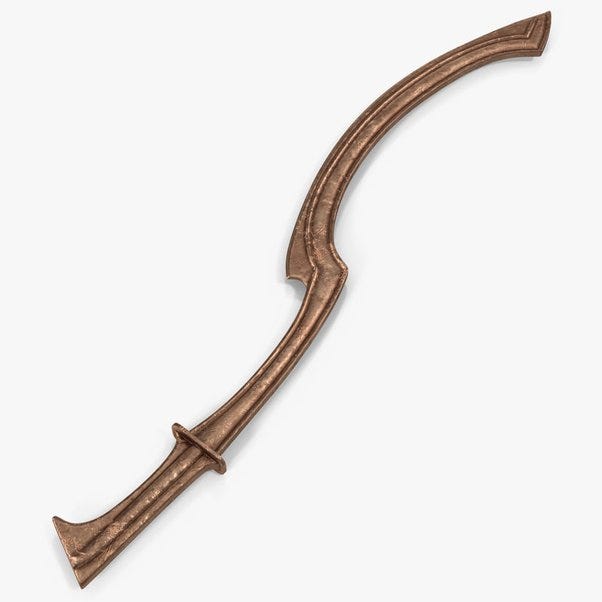Swords are cool. This is indisputable. Thus, our enduring fascination with them. Especially within hobby gaming spaces. However, many of our pop cultural ideas about premodern combat and arms and armor bare only slight, accidental resemblance to actual history. While this causes no end of psychic damage to those of us who are on the spectrum, this is actually OK. Not everything has to be accurate. But if you ever looked at that equipment list and asked, “what the hell is the difference between these?” Then this might be a place to start.
Disclaimer. Much of what once was is now lost. Only a handful of original texts used by schools of swordsmanship survive, and to fair, it seems likely that few such texts were ever created, as that which is written can be stolen by rivals. As far as we can tell, the vast majority of even our vocabulary and taxonomical naming conventions are relatively modern (Victorian era mainly) impositions on museum artifacts. People at the time just called swords “swords” for the most part. Maybe “big sword” if it was notably large.
Seeking then to impose an order on the chaos of images and names and redundancies, let us propose the following classification scheme. Any given swords can be classified by the following properties.
Grip Length: is this a one-handed weapon, two-handed, or a hybrid “hand-and-a-half” grip?
Hand Protection: how protective of the user’s hand is the guard of the weapon? This will range from “not at all” to “full metal jacket.” If we break this into general types, we have the following.
None. No provision is made to protect the hand. Many large knives, some bronze age swords, most sword canes.
Simple. Just enough to stop an incidental bind from sliding down to the hand. Or vice-versa, your hand from sliding up onto the blade. Gladius, spatha, “viking” swords. Often made of natural materials.
Cruciform. A single cross bar offering significant protection and enabling complex binding and winding in your swordplay, even close to the hand. Medieval “knightly” arming swords.
Complex. A cross bar plus one or more additional “finger rings” and/or “side rings,” or even a cup. Late medieval “side swords,” many early rapiers.
Basket. A complete roll cage of bars for the hand. “Basket hilted” swords.
Blade Length: How long is the blade?

Blade Curvature: From “none” to “extreme.” This ties into the next category.
Cut, Thrust, or Chop: What is the primary mode of offense?
And that’s it. Next time, we will look at the list of swords in the AD&D 1E’s PHB and classify them by this system.
